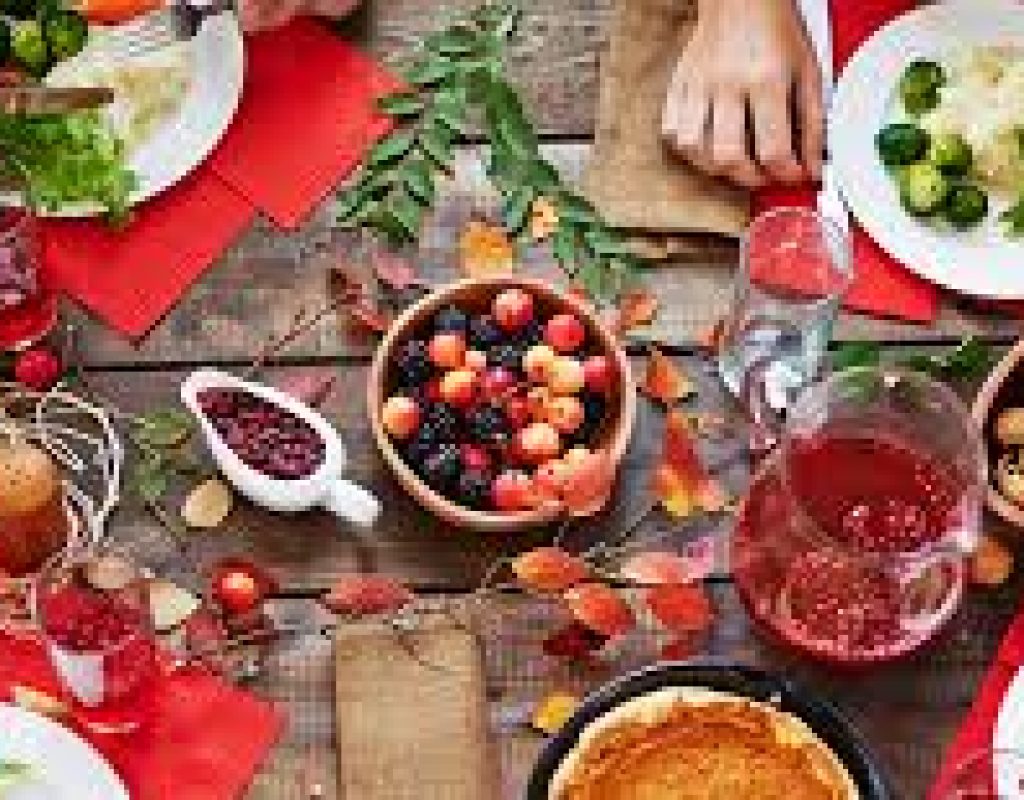With cold weather comes comfort food. As the temperature drops, healthy eating can be an increasing challenge. We’ve put together some tips for how to help keep your children’s nutrition on track this winter:
Avoid the Obstacles
 Food is at the center of a number of winter celebrations, but many traditional winter/holiday foods are high on calories and low on nutrition. A few occasional treats is fine, but consuming too many unhealthy foods can pose health risks. By providing plenty of healthy options and limiting the unhealthy ones, you can remove some of the temptation. But you can also empower your children to make their own healthy choices by teaching them about moderation. Encourage your children to fill up on lower calorie and more nutritious foods first like fruits and veggies, and allow them to save small portions of their favorite treats for last. This “fuel first” approach teaches children to provide their bodies with what they need before they treat their tummies to foods they simply want.
Food is at the center of a number of winter celebrations, but many traditional winter/holiday foods are high on calories and low on nutrition. A few occasional treats is fine, but consuming too many unhealthy foods can pose health risks. By providing plenty of healthy options and limiting the unhealthy ones, you can remove some of the temptation. But you can also empower your children to make their own healthy choices by teaching them about moderation. Encourage your children to fill up on lower calorie and more nutritious foods first like fruits and veggies, and allow them to save small portions of their favorite treats for last. This “fuel first” approach teaches children to provide their bodies with what they need before they treat their tummies to foods they simply want.
Explore the Store
 Getting your children to make healthy food choices means getting them involved! Plan a trip to the grocery store or farmers market with your child as a food adventure. Giving kids the option to have a say in what foods are picked can be helpful in encouraging them to eat it once you are home. Here are some great activities to promote healthy nutrition:
Getting your children to make healthy food choices means getting them involved! Plan a trip to the grocery store or farmers market with your child as a food adventure. Giving kids the option to have a say in what foods are picked can be helpful in encouraging them to eat it once you are home. Here are some great activities to promote healthy nutrition:
- Before the grocery store trip, give your child cookbooks or cooking magazines to look for recipes they would like to try. For older children, you can have them help plan the meal.
- While shopping, allow them to pick out the ingredients the recipe calls for or if you’re planning on the fly, whatever produce interests them.
- Find new foods! Commit to trying vegetables that are new to them (and you too!). Talk about their color, shape, size and feel.
- Take advantage of food samples when you are at the store to taste-test new foods.
- Use shopping activities to increase math skills. Example: If apples are three for a dollar, how much does it cost to buy six?
Let Children Take Charge
 Once children have explored all the produce, let them choose a few vegetables or fruits to take home and try. Let them plan how it’s prepared (within reason, of course!). Younger children can bag the produce, while older children can weigh it and calculate the cost.
Once children have explored all the produce, let them choose a few vegetables or fruits to take home and try. Let them plan how it’s prepared (within reason, of course!). Younger children can bag the produce, while older children can weigh it and calculate the cost.
Another way to have fun while learning? Work on colors with the Rainbow Challenge: Have them to put one item of each color in the cart: red pepper, orange carrots, yellow bananas, green broccoli, blue blueberries, etc.
Kids in the Kitchen
 Children love to help! Kids are more likely to try foods they’ve chosen and helped to prepare. Getting them engaged in the process also helps instill a sense of pride, confidence, and independence. Depending on their age and skill level, children can participate in various meal preparation tasks such as:
Children love to help! Kids are more likely to try foods they’ve chosen and helped to prepare. Getting them engaged in the process also helps instill a sense of pride, confidence, and independence. Depending on their age and skill level, children can participate in various meal preparation tasks such as:
- Sorting ingredients
- Measuring and mixing ingredients
- Washing fruits and vegetables
- Slicing fruits and vegetables
- Preparing salads
- Cooking
- Baking
Teaching your children about moderation, involving them in the meal planning, grocery selection, and food preparation, and empowering them to make their own decisions will benefit them far beyond the winter months. Working together, you can help your children form healthy nutrition habits for life and make some pretty great memories while you’re at it!





